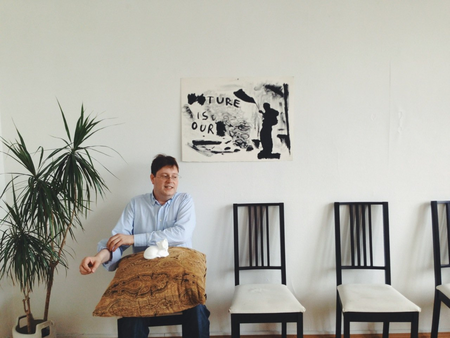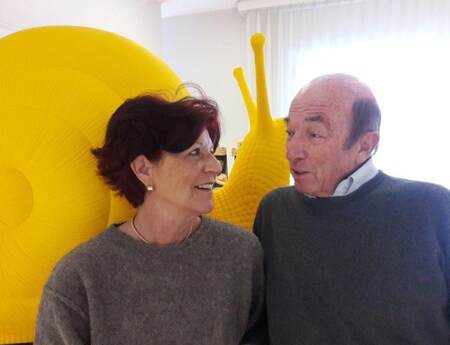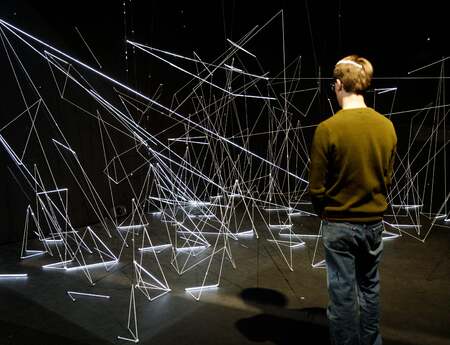Artists Instead of Missiles? – The Russian Art Scene in Upheaval
Why Russia should advertise its artists instead of its missiles - an interview with Simon Mraz, Cultural Attaché at the Austrian Embassy in Moscow
It was never easy for the Russian contemporary art scene: its history is marked by ups and downs and it remains largely undervalued in today’s international perception.
The art form which was initially known as non-conformism or inofficial Soviet Art began as a reaction to the social realism in the USSR in the 1950’s. As the only style officially allowed social realism mainly portrayed factory workers, soldiers or heroic images of top commanders in the October Revolution – without any type of free abstraction. Anyone who didn’t conform to this style couldn’t buy paint or brushes, much less organize public exhibits or sell their works. Exhibitions in private apartments were the only opportunity these artists had to show their creations. And they were only for a public of like-minded colleagues and friends.
With the fall of the Soviet Union and the Sotheby’s auction in 1988 Russian artists experienced a absolute hype. It was a turning point for many yet-unknown artists and it directed international attention to contemporary Russian art. Artists such as Yevgeny Yufit, Olga Florenskaja, Aidan Salahowa and Erik Bulatov appeared on the stage and began to talk to artists from around the world. With the economic crisis in 2008 however, there was a slump in the art market and national and international interest in Russian contemporary art declined. Since then the art market has been rehabilitating itself, but only slowly.
Actually in the last few years many galleries and museums have been opened, most are run by the wives or girlfriends of Russian oligarchs. This has increased both the prestige and presence of modern art in Russia. Some of these private initiatives had to close after a short time or were transformed into commercial galleries. In part there is a lack of know-how, of public interest and, above all, of support, all of which block the further development and internationalization of the Russian art world. But there is hope:
Simon Mraz has been underway in Moscow on an Austrian mission since 2009 and, while doing so, he has discovered his personal fondness for the Russian art scene. His apartment, located in the historic House on the Shore Road (Russ.: dom na naberezhnoj) has been transformed into an art gallery where the Austrian offers Russian artists a platform to present their works. In an interview with sculpture network he tells us his impressions of the Moscow art scene and what hope there is for Russian artists.

Mr. Mraz, you have been working as the Cultural Attaché of the Austrian Embassy in Moscow since 2009. What was your first encounter with the Russian art and cultural scene?
I myself have a background as an art historian. Before the economic crisis I worked for an auction house and we sold Old Masters and silver to Russia. When I came here with a new task, namely of bringing Austrian art to Russian, I did not have a network which I could rely on. Nevertheless, I quickly heard about locations where contemporary art played a role or artists were offered a platform. Since 2009 the number has increased, that is certain, but at that time there were so few that I was quickly able to get involved in a few locations.
How was the access to the artists themselves?
I concentrated on meeting artists as quickly as possible. The most important thing is to be in contact with the creative people. And people are very open. Artists generally have the urge to find a public. But this openness was still a surprise to me; if you consider New York, you can’t simply call up a top artist and be invited to their home for a chat. But here that is possible.
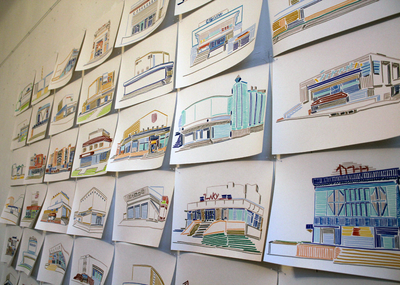
Where do you find interesting artists?
I always try to invite young artists to my apartment so that they can have an exhibit there. The art belongs to the artist, but he has to invite his friends. Good artists usually know other good artists. That is a great opportunity to meet new people. There are only a few off-spaces where artists organize things themselves. Most of the interesting people that I met came from the Institute for Problems of Modern Art, in short IPSI (Russ.: Institut Problem Sovremennogo Iskusstva). Joseph Backstein, co-founder of the Moscow Biennale, founded this institute with the idea that it is important to give people who deal critically with contemporary art a theoretical basis. And the Rodchenko-School, an academy for photography and multimedia, is just as interesting. These are very good people.
When you are visiting museums like the Garage or MMOMA in Moscow do you notice a difference to Western museums for contemporary art?
Yes, certainly, there is a difference. There is no museum in Moscow where it is possible to view Western art history from the 20th century. The few items there are, are in St. Petersburg, for example the Ludwig Collection. The big museums like the Tretjakow Gallery, which is the museum for Russian art, are just now slowly touching upon contemporary art. If you had walked through the Tretjakow ten years ago, you would have been surprised at what was being shown as contemporary art. There simply wasn’t any definitive discourse about what is contemporary and what wasn’t. Until recently you would see various images of forests and lakes which were exhibited as the modern art of Russia. And only now is the face of the museum also changing, with young employees and a new General Director. But that is all still changing, that’s why it looks a bit different than other European museums.
What things about the Moscow art scene have changed since 2009 ?
The people are no longer the same. In the meantime, ten years have passed and the artists who were young then are older now. The period around 2009 was simply a fundamentally different time. A time where these political tensions did not yet exist. Culture and creating art were not a big topic. Everyone just did what they wanted more or less. Today that has changed. On the one hand, art and culture are a cultural and political topic and, on the other hand, there is a lot of support for contemporary art from the private sector. There is considerably more focus on the entire topic than there was ten years ago.
What trends and changes do you see?
If you look at MMOMA, there are a lot of young people who are very involved. Just recently another branch of the MMOMA opened – an Education Center. Then there is also the Biennale for Young Art. They hired a young Italian, Lucrezia Visconte, to run it. That gives you hope. Furthermore, the Multimedia Museum, an enterprise started by Olga Sviblova. Plus, she was also able to create a very important school, which I already mentioned, the Rodchenko School. But, unfortunately, just like the people who founded them, these institutions also get older. That is the nature of life - also that the advisory boards do not get any younger. Plus, we should mention the Cosmoscow - a very ambitious art fair which focuses on Russian contemporary art and has the goal of selling this art in a fair and dignified manner. It’s great to see when Russian art is presented nicely and with good lighting - that may sound obvious, but it really is important. In general, it is a tremendous jumble. But for people like me, who live here, that is also very charming. There is a great urgency to learn a lot very quickly. Things somersault forward and then two rolls backwards - or vice versa. But the most important thing is that something is moving and changing.
Are there any changes in the role of the state governement?
No, these changes don’t mean that there is now a larger state structure that supports contemporary art. Like I said, state museums are increasingly displaying contemporary art, particularly the Tretjakow Gallery, the Puschkin Museum in Moscow, the Hermitage in St. Petersburg, the daring National Center of Contemporary Art, which has a very exciting program, particularly in the Russian regions. But what these museums are missing is a purchasing budget for contemporary art and a deliberate and detailed development program for contemporary artists. On the other hand, any respectable oligarch who considers himself worth anything also has an art foundation: The V-A-C-Foundation, Botanin-Foundation, Garage, Kollekziya, just to name a few. The richest people are busy supporting contemporary art. That’s an interesting phenomenon; in a certain way the private support compensates for the role of the state. And it is trailblazing, which may help the state to notice that this is an exciting topic that everyone should support. That is a very interesting development.
In general what type of art is collected in Russia? Any contemporary Russian art?
The majority of local collectors still concentrate on traditional Russian art. Contemporary art is probably around fifteen percent. And even that is preferably contemporary Western art. Russian art often seems depressing - you almost have to start crying while you’re in the gallery; that is certainly not advantageous for displaying. And Russian art is much too cheap. It costs less than a tie. So if you have gold fittings in your bathroom, then you can afford to buy half of the entire art market here. Naturally, that’s an exaggeration, a story that I am telling, somewhat extreme, but there is also a kernel of truth. Prestige purchases of contemporary art – that’s something that will take a while before it becomes part of the Russian art market. And the art scene is in a process of change. When it gets discovered then it also has a good chance of getting decent money. At the moment that is still a somewhat smaller phenomenon.
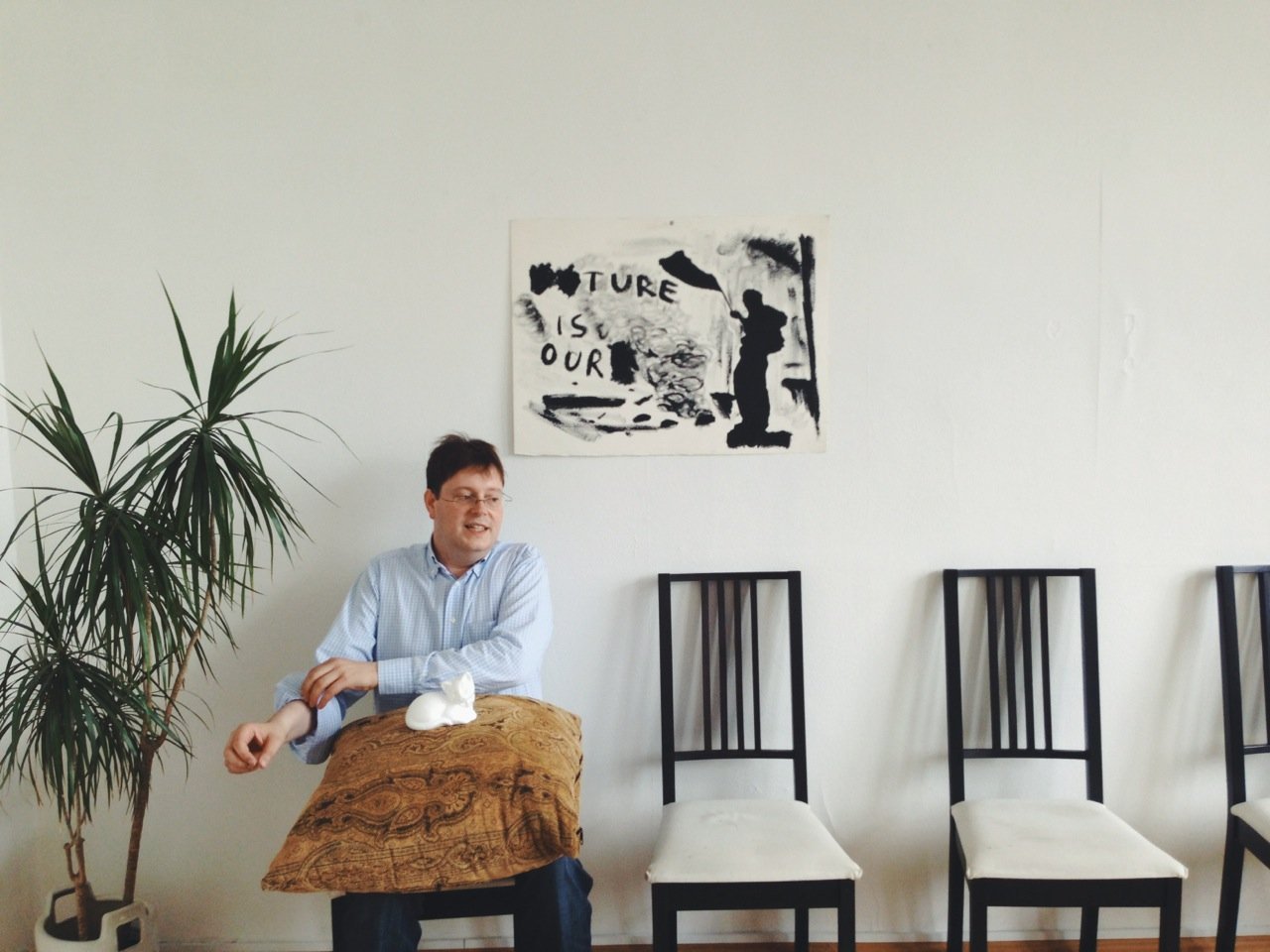
Simon Mraz in his flat
(c) Maria Kovalevskaya
In an interview with the Calvert Journal you said that Eastern European artists are more robust than their Western counterparts. That it is much harder to be an artist in Eastern Europe. Is that really so?
It might have been a bit extreme to say that. It’s not that easy in Western Europe either. But in Europe there are many institutions and the state that support artists. Here in Russia artists are particularly challenged just to survive, to find acceptance and to persist. That is a material problem, but even more it is a spiritual question. Because artists in the West naturally have greater self-confidence and because they rightly see themselves as an important part of society. Simply because of their work. Because people believe that someone who creates art is an essential part of society. That is something that I would really wish for in Russia – that the country views its artists as one of its most valuable assets. That is, in my opinion, a difference. That’s why I think it is very important for curators or museum directors to visit Russia. They shouldn’t just take a quick look around and leave, they should really be interested. That is very important in order to create greater interaction between Europe and Russia.
So there is a lack of interest in Russian contemporary art at both the national and international level?
In Europe you read the newspaper and whenever they write something about Russia it has to do with economics or politics. In general, Russia has a permanently negative presence in the media. People should also use this media presence and report about creativity in Russia. I always get very upset when people say „Putin’s Russia“. You can think whatever you want about Putin, but it’s really not „Putin’s Russia“. Russia belongs to the young ravers, sub-cultures and creatives just as much! There are so few people who see that fact and support it. The problem is that there is no engine for contemporary art. It is not recognized by politics and is not see as part of the Russian identity. It would make a much better impression if Russia wouldn’t talk so much about their missiles and would focus more on their creative talents. And it is ironic that the world should fear Russian missiles, but the Russian people are afraid of their own artists. That can’t work. But at some point in time that will change – I’m optimistic. I am convinced that people will realize the truth.
And one last question: What challenges do artists in Russia face these days?
The challenge is that they experience a time where contemporary art is no longer the enemy, but is a essential part of the future of this country. I almost said that it is the function of art to convince politicians of its value, but no, I think that the exact opposite is true. It is the state’s job and duty to value art. Meanwhile the challenge for the creative scene is to continue unswervingly on their path. And not to despair when recognition is not granted immediately, but instead to work on developing a mechanism to make Russian contemporary art visible internationally. Many people can contribute to this, particularly curators, institutions, civil servants, collectors, patrons and journalists
Author: Charlotte Kromer

Charlotte Kromer is our
expert for Eastern-Europe
and talked for us with
Simon Mraz.

